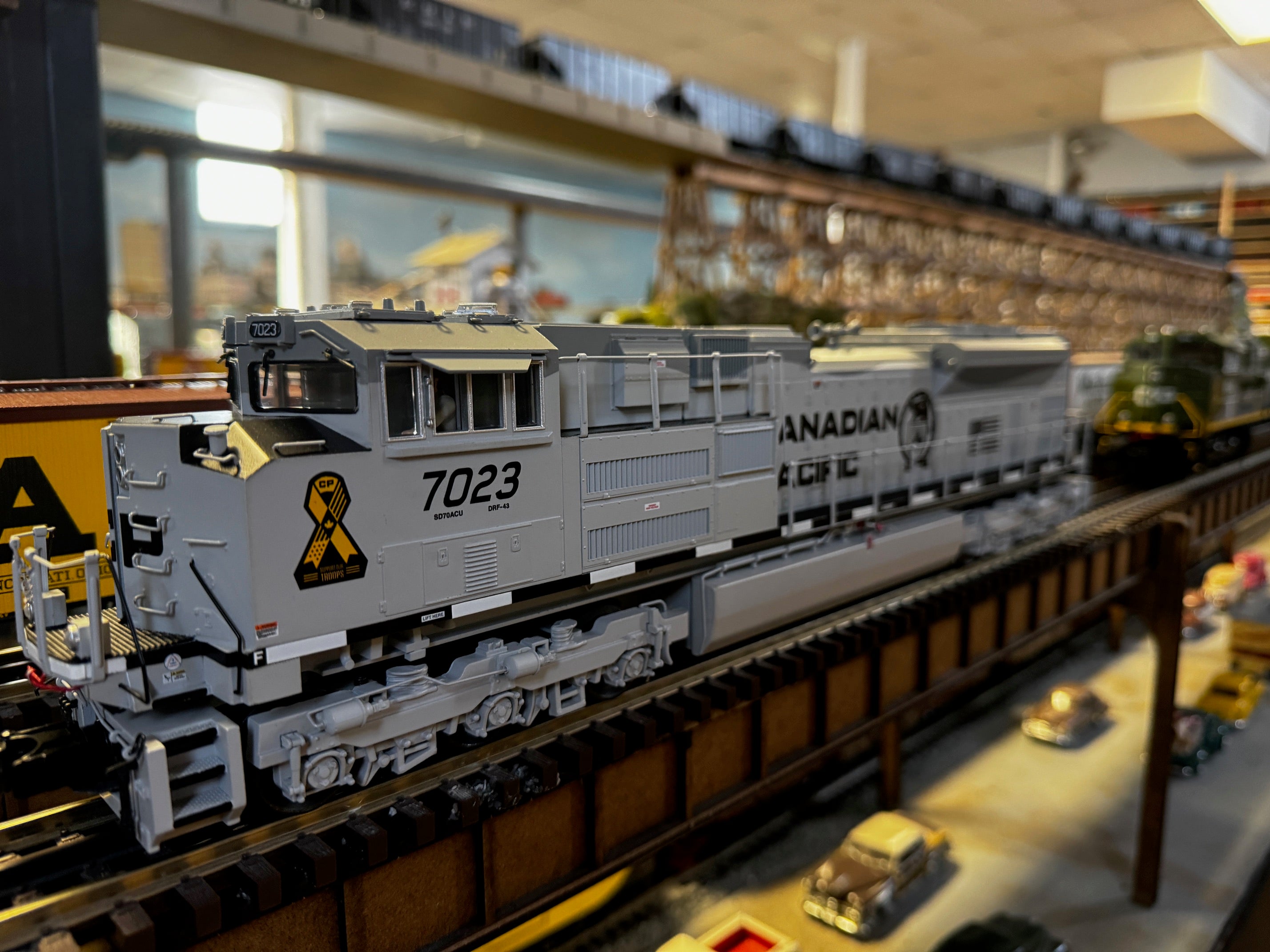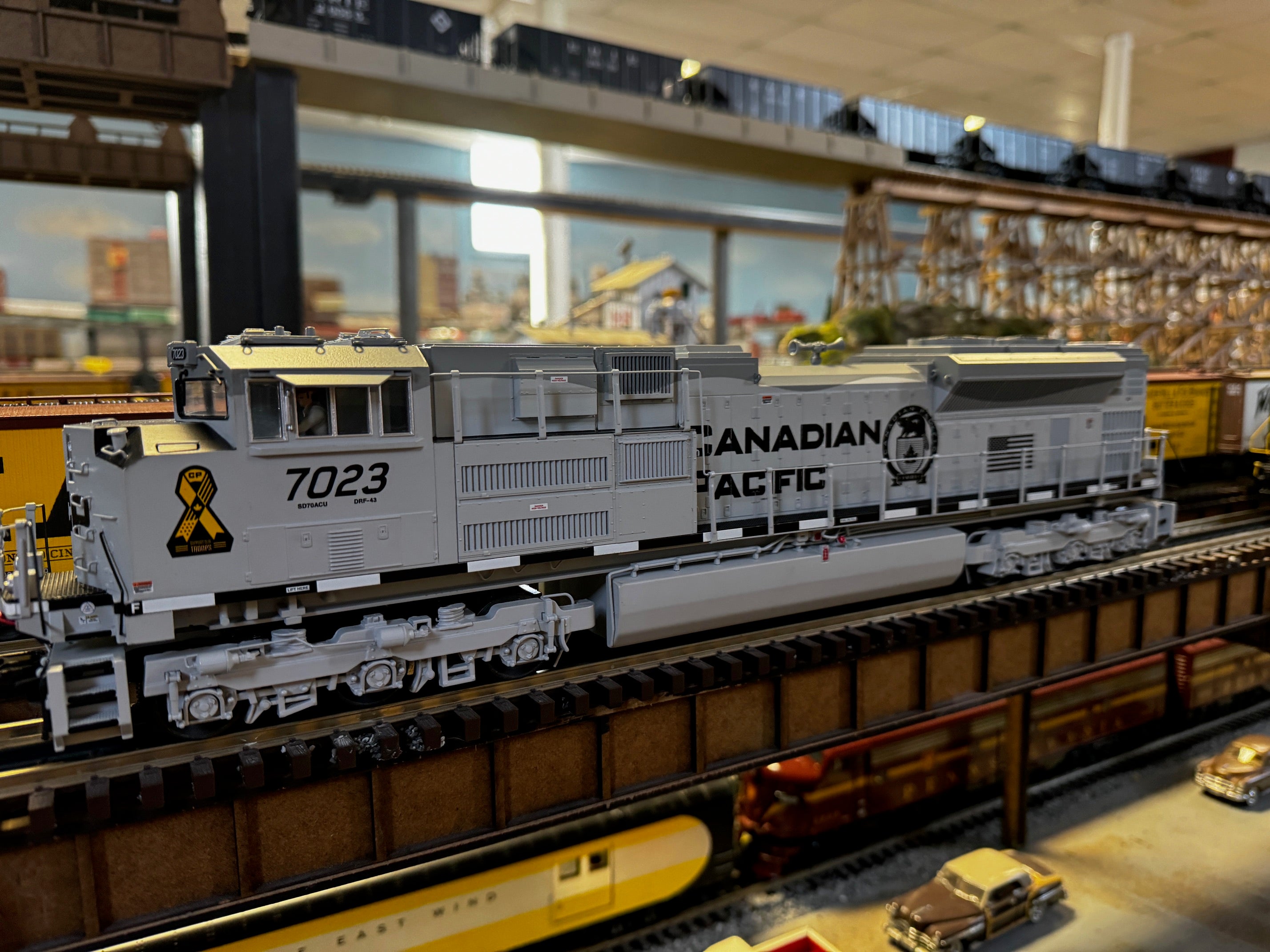Love it? Add to your wishlist
Your favorites, all in one place. Shop quickly and easily with the wishlist feature!
[message]
[title]
[message]









Announcement Date:
Guaranteed Pre-Order Due Date:
Expected Delivery Date:
Individually Boxed:
| Announced Date: | April 2022 |
| Released Date: | Jan 2024 |
| Individually Boxed: | No - 2 to a case |
Note: Prices are subject to change due to board availability/cost
The DC-motored SD70M-2 and AC-motored SD70ACe are EMD’s hope for the future. While designed to meet the Environmental Protection Agency’s Tier-2 emissions requirements that took effect on January 1, 2005, they also have a higher purpose: to recapture the lead in North American locomotive sales that EMD lost to General Electric in 1987. Under the hood of both engines beats a third-generation model 710 diesel with 4300 horsepower; only slight modifications were needed to make the model 710 meet new emission standards. With 5000 such motors in service worldwide and a reputation for dependability, EMD reasoned that shop crews would prefer familiar technology. Other than the prime mover, however, virtually every element of these engines has been re-thought to create a 21st century locomotive. The engines’ angular nose offers the crew far better visibility than most other locomotives, and the cab is comfortable for engineers of almost any size and accommodates a crew of three — an important factor in a modern world without cabooses. Digital screens provide a range of information on what is happening both inside the locomotive and out on the road. The key difference between the SD70M-2 and the SD70ACe is what’s under the floor: traditional DC traction motors in the SD70M-2’s trucks and AC traction motors in the SD70ACe. While AC traction motors put more tractive effort on the rails and enable an SD70ACe to start a heavier train with the same horsepower, that additional capability comes at a cost. AC-powered locomotives are both more expensive and more electrically complex than engines with DC traction motors, which most diesels have used since the 1940s.
177 W Main St
Atlanta, IN 46031
765-292-2022
support@mrmuffinstrains.com
Sign up for our newsletter and be the first to know about coupons and special promotions.
© 2025, MrMuffin'sTrains Powered by Shopify
